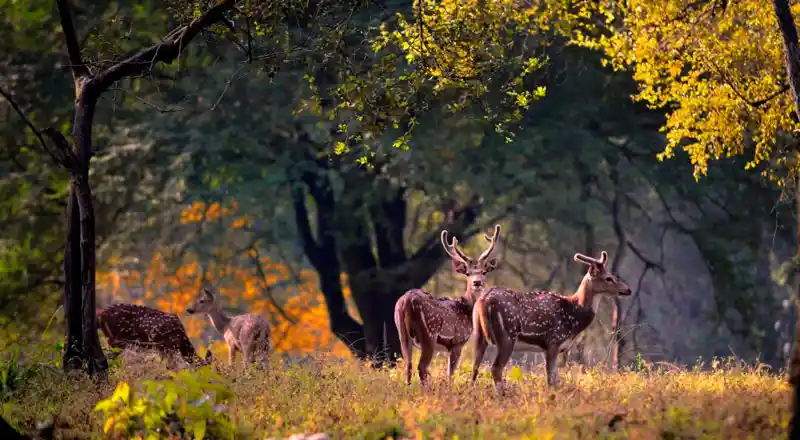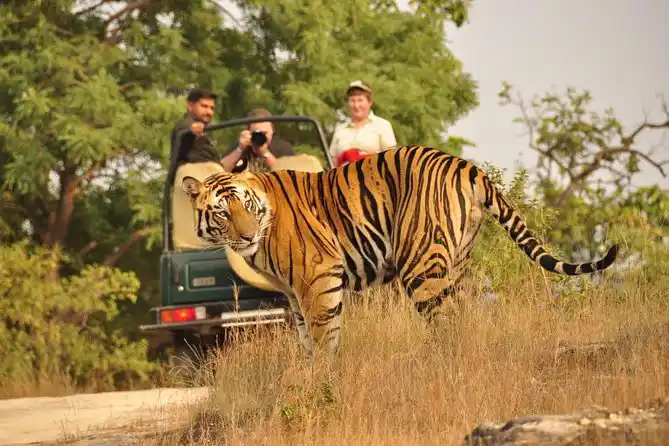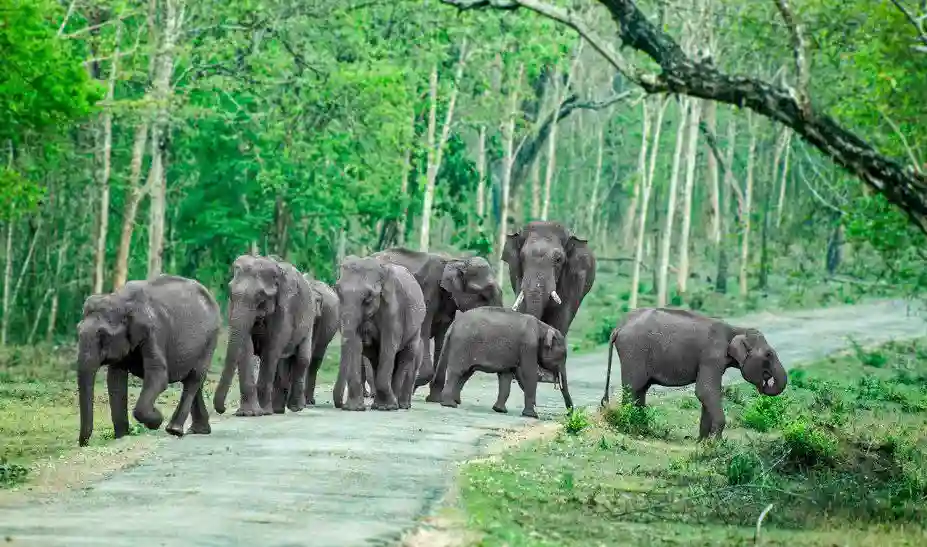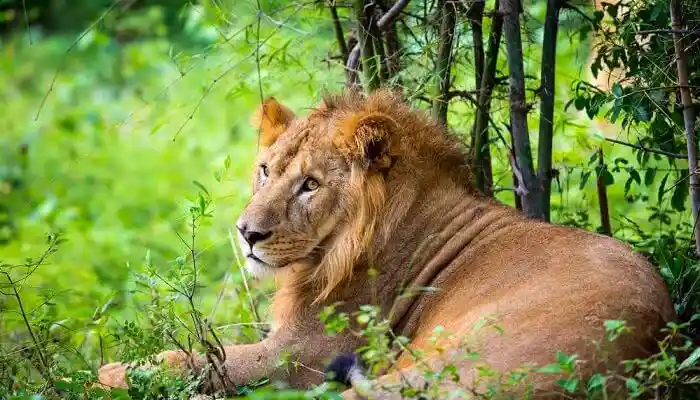If you’re looking for the Top 10 National Parks in India, then you are at the right place. In this article, we will discuss the Top 10 National Parks in India.
When it comes to national parks, the first thing people think of is the United States on the other side of the Atlantic Ocean. In fact, the national parks close to India have a different kind of mysterious temptation.
India is a unique and enigmatic subcontinent of vast expanses and incredible biodiversity. India has 104 national parks and 544 wildlife sanctuaries, including tiger sanctuaries, desert sanctuaries, bird sanctuaries, marine parks, and even a floating national park.
The species here are amazing, many of which are rare and endangered. If you’re lucky, visitors can see great one-horned rhinos, Bengal tigers, Asian lions, Indian blackbucks, and snow leopards in their natural habitat… For those looking for an adventure tour away from the crowds, jeeps, elephants, camels, and Hiking is a good option. Below, we bring you the ranking list of the Top 10 National Parks in India. let’s get to know it together.
Top 10 National Parks in India
1. Jim Corbett National Park

Location: Nainital District, Ramnagar, Uttarakhand
Jim Corbett National Park is one of the best national parks in India. Everyone loves seeing animals in the wild. Jim Corbett National Park, India’s oldest national park, is a great place to see the endangered Bengal tiger. The park was established in 1936 and was renamed in 1954 in honor of author and wildlife conservationist Jim Corbett, who helped establish the nature preserve.
The dense vegetation, including jungle and forest, makes it difficult to see tigers – April to June is best, but visitors may spot other wildlife, including elephants, leopards, rhinos, and Himalayan black bears.
2. Sundarbans National Park

Location: Kolkata, West Bengal
The Sundarbans National Park was listed as a World Natural Heritage Site in 1997. In Bengali, Sundarbans means “beautiful forest” or “the most beautiful forest”. The park is one of the largest mangrove forests in the world, covering an area of 140,000 hectares. The delta of the Brahmaputra River and the Meghna River, adjacent to India’s Sundarbans World Heritage Site identified in 1987, is also the habitat where many marine animals spend their incubation period before returning to the sea.
The tidal channels, mudflats, and salt-tolerant mangroves of the Sundarbans National Park provide an excellent example of a growing ecological process and are world-renowned for their diversity of animal species, including more than 260 species of birds, Bengal tiger, and many rare and endangered species (such as crocodile and Indian python, etc.).
Sundarbans is an ideal place for tourism, leisure, and scientific research. You can take pictures of the famous Bengal tiger, watch wild animals, go boating in the jungle, listen to the sounds of nature, explore nature, etc., and experience the beauty of the mountains in the world’s largest mangrove forest. The tranquility and the beautiful scenery are truly treasured experiences.
3. Ranthambore National Park

Location: Ranthambore, Rajasthan
One of the most famous national parks in northern India, Ranthambore is a great sanctuary for a multitude of creatures. Once a hunting ground for the Maharajas of Jaipur, the park is a great place to spot diurnal tigers (unlike most nocturnal tigers), which are active during the day. Ranthambore is also home to numerous mammals and reptiles.
There are about 3,200 wild tigers in the world, nearly two-thirds of which live in India. Ranthambore National Park is one of the key national parks of India’s “Tiger Protection Project“. It is also the location for many wild tiger documentaries produced by the British BBC and the National Geographic Channel. The world-famous “Tiger Queen” once lived in this.
The park used to be a private hunting ground for the Jaipur royal family in India. It is located in Rajasthan in northern India and covers an area of more than 392 square kilometers. There is Ranthambore Fort in the park, and there are various ancient temples and mosques nearby.
The park is also the best natural destination for watching other wild animals. There are crocodiles and giant tortoises in the lake, and there are also opportunities to spot wild animals such as spotted deer, wild boars, and long-tailed langurs, as well as nearly 300 species of birds.
See also ”Top 20 Most Beautiful Places in The World”
4. Keoladeo National Park

Location: Bharatpur, Rajasthan
Keoladeo National Park is one of the best bird-watching places in the world, a UNESCO World Natural Heritage Site. Formerly known as the Bharatpur Bird Sanctuary, you can also spot golden jackals, hyenas, fishing cats, sambar, wild boars, and Indian pythons basking in the winter.
It used to be a duck hunting area, but now it is one of the important areas where a large number of waterfowl birds live in winter. These waterfowl come from Afghanistan, Turkmenistan, China, and Siberia. 364 bird species have been recorded in the park, including the rare Siberian crane.
Keoladeo National Park was once a hunting ground for Indian maharajas to hunt wild ducks. Keoladeo National Park is the main wintering habitat for the endangered Siberian Crane. In December 1984, the number of cranes reached the highest level in several years, with a total of 41 cranes, including 8 juveniles. But between 1988 and 1989, the number of cranes dropped sharply to 19.
Other birds are common teals, cotton teals, tasseled ducks, crested ducks, spoonbills, cormorants, flower storks, Indian storks, oriental ibis, ring-collared lion-nosed shells (perhaps the most wading birds), running ostrich, spotted gannet, common sandpiper, wood sandpiper, and green sandpiper; there are many species of osprey alone, such as white osprey, falcon, Athena osprey, short-toed osprey, Tawny Ospreys, King Ospreys, and Spotted Ospreys, the list goes on and on.
5. Bandhavgarh National Park

Location: Bandhavgarh, Rajasthan
Bandhavgarh National Park, once a game sanctuary in Maharajas, has one of the largest tiger populations in India, making it an ideal destination for spotting shiny striped pelts. The park is also home to a large number of leopards, approximately 250 species of birds, 70 species of butterflies, and a large number of reptiles.
6. Kanha National Park

Location: District Balaghat, Madhya Pradesh
Also known as the Kanha Tiger Reserve, Kanha is one of the well-maintained national parks in Asia and home to India’s famous Royal Bengal Tigers. The deer and antelope they hunt roam the magnificent forests and meadows alongside Indian elephants, sloth bears, and a variety of birds.
See also ”Top 10 Most Beautiful Fishes in The World”
7. Kaziranga National Park

Location: Kanchanjuri, Assam
Surrounded by the Brahmaputra River and the Kalbianlong Mountains, the stunning Kaziranga National Park is home to two-thirds of the world’s endangered Indian one-horned rhino population and has the world’s highest density of tigers. You can also spot elephants, wild buffalo, and swamp deer, as well as beautiful migratory and resident birds.
8. Bandipur National Park

Location: Chamarajnagar, Karnataka
Bandipur National Park covers an area of 874 km and is dedicated to the protection of endangered animal species. Established as a tiger sanctuary under the Tiger Project in 1974, the park is home to the majestic Bengal tiger as well as Indian elephants, wild boars, sambars, cheetahs, over 200 species of birds, many reptiles, and numerous rare butterflies.
9. Periyar National Park

Location: Thekkady, Kerala
Periyar National Park and Tiger Reserve, located in the middle of the beautiful Cardamom Hills, is home to rare, endemic, and endangered flora and fauna. The best way to explore the park is from a covered boat and try to spot mammals including Bengal tigers, Asian elephants, white tigers, Indian giant squirrels, numerous reptiles, amphibians, and some 266 species of birds.
10. Gir National Park

Location: Gujarat
Gir National Park is the only destination in the world where you can still encounter Asiatic lions in the wild, with more than 500 living in it. Creatures that roam the dry terrain include the choosing, the world’s only four-horned antelope, chinkaras (gazelles), leopards, and sambar. There are more than 300 species of birds and more than 40 species of reptiles and amphibians.
See also ”The Iconic Top 10 Tallest Statues in The World”
List of National Parks in India PDF
Here we provide you the list of national parks in India pdf. You can download it from here :




